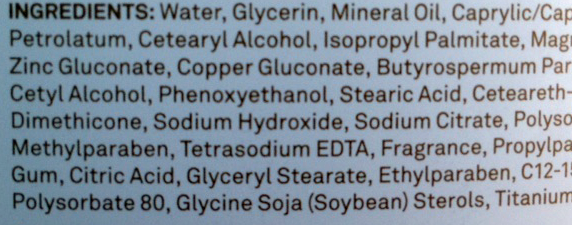
Petrolatum reduces water loss from skin
Petrolatum is widely used in moisturizing lotions and creams because it helps prevent the diffusion of water from within skin to ambient air. It is actually a mixture of hydrocarbons in the form of a petroleum jelly that was first discovered in 1859 by a chemist in Pennsylvania. When you apply a skin-care product containing petrolatum to skin, it forms a thin film that only penetrates into the near-surface corneocyte layers of the stratum corneum. Consequently, this film (or occlusive agent) slows the rate of transepidermal water loss (denoted TEWL), with the result that the stratum corneum hydrates and swells in thickness.
How does petrolatum compare with vegetable oils such as almond oil that can also be used as occlusive ingredients in skin moisturizers? Patzelt at al. (2012) addressed this question by measuring the TEWL from test areas located on the forearms of 6 volunteers before and after the administration of natural oils and petrolatum. The adjacent bar graph depicts how the TEWL (measured in grams of water lost to air per square meter of skin surface per hour) changes with the applications of the occlusive agents.

Petrolatum produced a much greater reduction in skin water losses than vegetable oils when applied to the forearms of 6 volunteers.
Although the vegetable oils did reduce water losses from skin, petrolatum was far more effective (producing more that a factor of 2 reduction in TEWL!). Moreover, Choe et al. (2015) also found that petrolatum produced a significant hydration or swelling effect on the stratum corneum, whereas other natural oils did not.
Summary
Application of petrolatum-based lotions will help compensate for drying stresses on skin (e.g., as the Dry Skin Index increases above 4) by reducing dermal water losses and thus increasing hydration of the stratum corneum.
References
